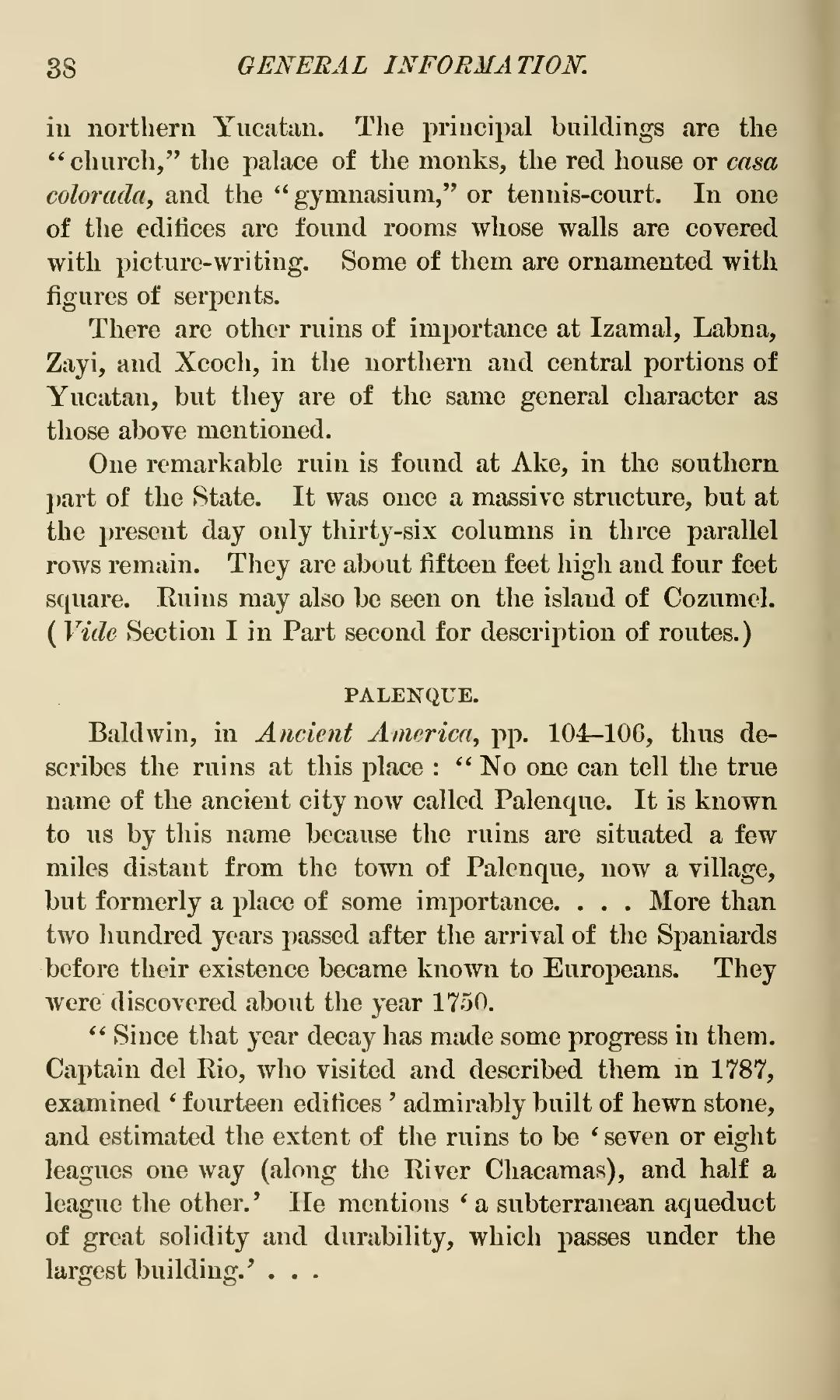in northern Yucatan. The principal buildings are the "church," the palace of the monks, the red house or casa colorada, and the "gymnasium," or tennis-court. In one of the edifices are found rooms whose walls are covered with picture-writing. Some of them are ornamented with figures of serpents.
There are other ruins of importance at Izamal, Labna, Zayi, and Xcoch, in the northern and central portions of Yucatan, but they are of the same general character as those above mentioned.
One remarkable ruin is found at Ake, in the southern part of the State. It was once a massive structure, but at the present day only thirty-six columns in three parallel rows remain. They are about fifteen feet high and four feet square. Ruins may also be seen on the island of Cozumel. (Vide Section I in Part second for description of routes.)
PALENQUE.
Baldwin, in Ancient America, pp. 104-106, thus describes the ruins at this place: "No one can tell the true name of the ancient city now called Palenque. It is known to us by this name because the ruins are situated a few miles distant from the town of Palenque, now a village, but formerly a place of some importance. . . . More than two hundred years passed after the arrival of the Spaniards before their existence became known to Europeans. They were discovered about the year 1750.
"Since that year decay has made some progress in them. Captain del Rio, who visited and described them m 1787, examined 'fourteen edifices' admirably built of hewn stone, and estimated the extent of the ruins to be 'seven or eight leagues one way (along the River Chacamas), and half a league the other.' He mentions 'a subterranean aqueduct of great solidity and durability, which passes under the largest buildings.' . . .
